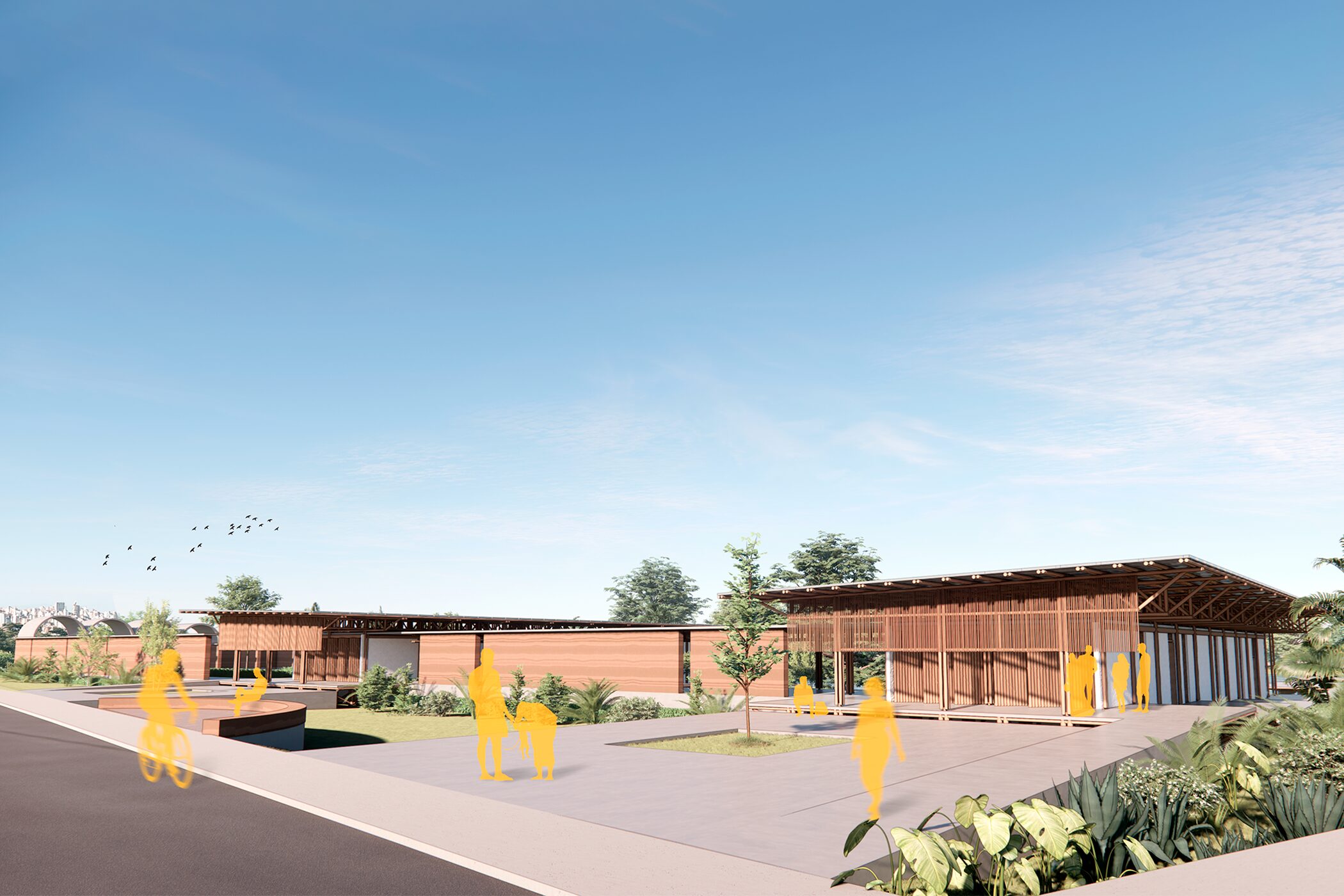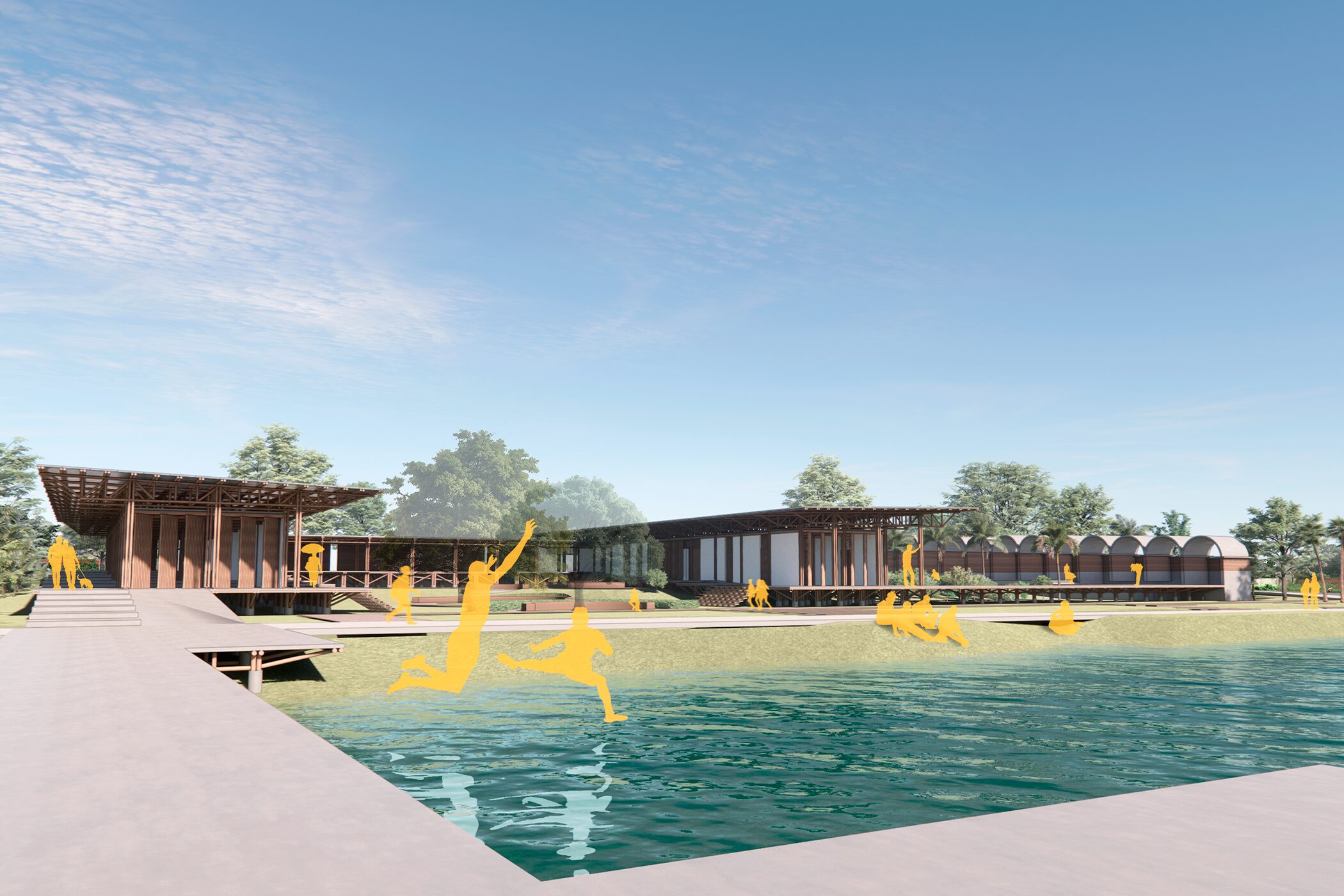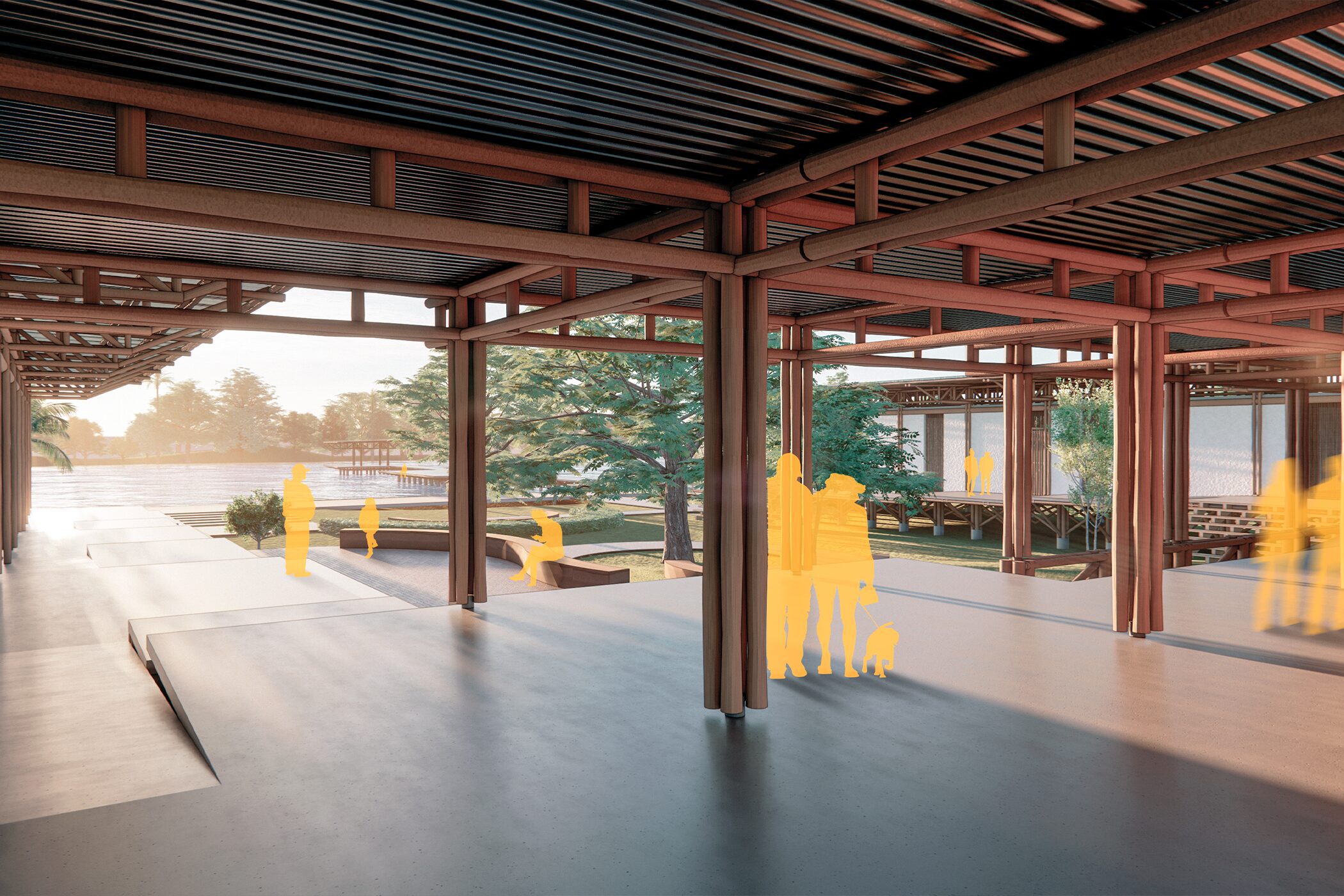Project implementation: Brazil
Project development: Brazil
Students: Ana Beatriz Monteiro Furtado, Kayo Gabriel da Silva Sousa, Paulo Henrique Gonçalves Alves Pereira, Tomaz Neto Meneses Cavalcante Medeiros.
Guidance Roberto Alves de Lima Montenegro Filho
In Piauí, the indigenous peoples, encounters with African ancestry, and Portuguese acculturation. Piauí, the region of rivers, heat, and clay culture. Of Esperança Garcia. In Teresina, founded on a plain where the settlement level is close to that of the watercourses, people live with the fluctuating levels of both rivers, with excessive rainfall during part of the year, alternating with periods of drought. A climate of extreme heat, it is the national capital with the highest average temperature, with forecasts of more pronounced warming (Wong et al., 2024), among human settlements at risk from climate change: How to inhabit these territories and deal with the violence of intensified natural events? Islands like Kiribati already have almost their entire territory partially submerged, while coastal cities see their shores threatened.
With successive floods between the Poti and Parnaíba rivers, the site is a humid, marshy plain with lagoons and dense vegetation, a geography that minimizes the impacts of flooding. A territory of less interest to real estate speculation, it is inhabited by a traditional riverside population with lower purchasing power, including former quilombolas. It receives little public investment, except for the Lagoas do Norte project, which preserves soil, vegetation, and lagoons, although not always participatory (MATOS, 2017).
Flooding is exacerbated by urbanization, with impermeable soil and insufficient vegetation (SILVEIRA and MONTEIRO, 2013), and by extreme weather. The land, between the Parnaíba River and Lagoas do Norte Park, is in a residential area. It is susceptible to flooding, especially in the area facing the lagoon. It faces the park and has a main avenue, serving as a local hub.
The east-west layout enhances thermal comfort by avoiding direct sunlight from the west. The independent bamboo construction system allows for elevated structures to accommodate fluctuations in water levels. Lightweight materials minimize costs and energy expenditures, and facilitate logistics, enabling collaborative efforts. The project aims to promote bamboo cultivation: easy to grow, it contributes to slope maintenance and minimizes siltation.
The building's form follows the "Boot and Hat" design (Armando de Holanda), with large overhangs for shade and a light roof. The lightweight enclosures use hand-laid rammed earth, reviving traditional, low-impact craftsmanship. The bamboo-supported vaulted roof (technology by architect Leiko Motomura) avoids high-impact materials. Bamboo, wood, and clay are elevated off the ground and protected by a concrete foundation.
A new relationship with the city and nature is proposed, where lagoons and vegetation are vital to contain the force of the waters. The project will have an educational focus, focusing on environmental re-education and reclaiming the relationship with water. Construction as a training ground, with social and environmental ethics, dissemination of practices, and income generation. A program that affirms riverside cultures, indigenous peoples, and Africans or Venezuelans with suppressed traditions. Respect.




